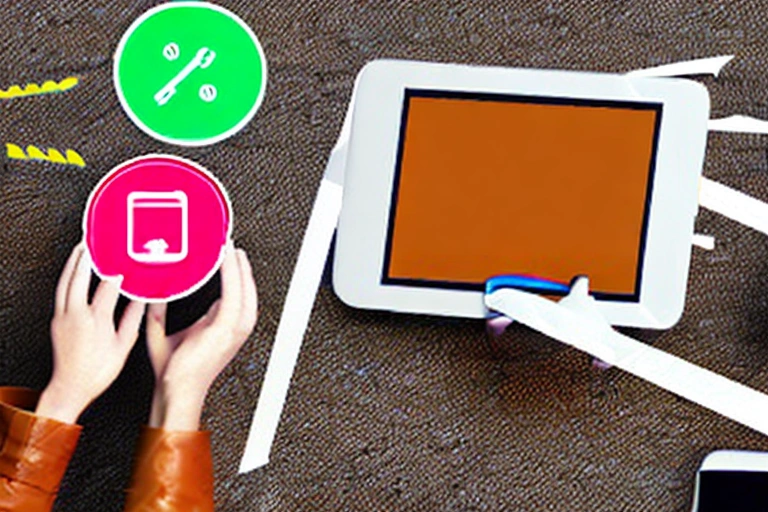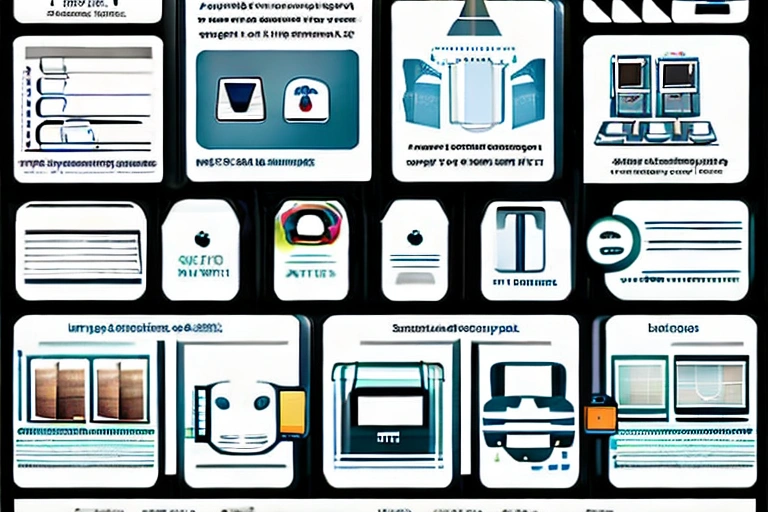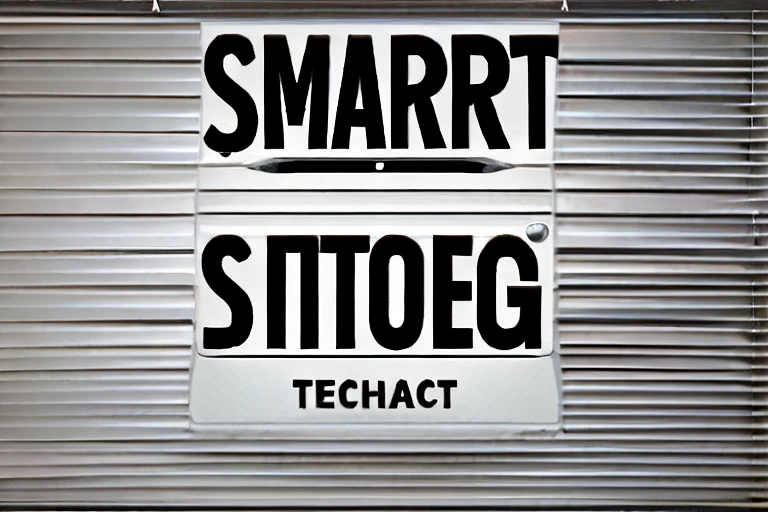Are you curious about the smart technology projects Wikipedia has been working on? Do you want to know how they’re changing the way we interact with technology? Look no further! In this blog post, we’ll provide a concise guide to Wikipedia’s smart technology projects and explore the implications of their work. Read on to learn more!

What is Smart Technology?
Smart technology is a broad term that refers to any form of technology that can be controlled or operated through the use of sensors, data processing, and communication devices. Smart technology is often characterized by its ability to improve efficiency and productivity by automating tasks or providing enhanced user experience.
Benefits and Uses of Smart Technology
smart technology can be used for many different purposes, from improving efficiency in business to helping disabled individuals connect with the world. Here are some of its most common benefits and uses:
Efficiency: Smart technology can help businesses operate more effectively by automating processes or tracking data. For example, a company may use smart technology to manage inventory remotely or track customer orders.
Connection: Smart technology can help disabled individuals access information and services they would otherwise not be able to access. For example, a disability-friendly website may have features that allow users with disabilities to navigate it easily. Alternatively, smart devices such as hearing aids and wheelchairs can be connected directly to the internet so people with disabilities can take advantage of online resources.
Safety: Smart devices can help keep people safe by warning them if there is a danger near them (such as an explosive device), providing information about weather conditions, or keeping an eye on children while they are playing outside.

Major Types of Smart Technologies
There are many different types of smart technologies, each with its own set of benefits and uses. Here are some of the most common types of smart technologies:
-
Smartphones and tablets: Smartphones and tablets are handheld devices that use a variety of sensors and processors to allow users to access a variety of applications, including internet browsers, email, and video playback. They also typically have larger screens than traditional cell phones, making them better suited for viewing videos and browsing the internet.
-
Home automation: Home automation is the use of electronic devices and software to control aspects of a person’s home, such as lights, temperature, and security systems. Home automation can be used to make life easier by automating tasks that are often difficult or time-consuming to do manually, such as turning on the lights when you enter a room or turning off the lights when you leave a room.
-
Wearable technology: Wearable technology is any type of technology that is worn on the body, such as smart watches, fitness trackers, and headbands. These devices typically have small screens that display information about the wearer’s health and activity levels, as well as information about the surrounding environment.
-
Robotics: Robotics is the use of machines that are able to carry out tasks on their own, typically with the help of sensors that allow them to understand their surroundings. Robotics can be used in a variety of industries, including manufacturing, transportation, and healthcare.
Challenges with Implementing Smart Technologies
Smart technologies have the potential to improve our lives in ways we could never imagined. However, there are also some challenges with implementing these technologies. For example, many of the current smart devices are not always very user-friendly, and they require a good amount of battery life to stay active. Additionally, it can be difficult to integrate these devices into our daily lives, as they often require redesigning familiar aspects of our environment. However, with continued research and development, many of these challenges will likely be overcome over time.

Leading Companies in the Field of Smart Technologies
One of the great challenges with implementing smart technologies is that they are often new and unfamiliar to many people. This can lead to hesitation or reluctance when adopting them, and as a result their widespread deployment has been slow in comparison to more traditional technologies.
However, this may not be the case forever. With advances in technology, it is becoming easier for companies to implement smart tech projects. There are various methods that companies can employ when undertaking such a project, and the best route will vary depending on the specifics of each situation. However, some key concepts that should be taken into account include: data collection, analysis and management; communication and collaboration tools; RFID tags; internet of things (IoT); sensors; wearable devices; big data analytics; cognitive computing etc…
If you’re looking for a comprehensive guide on how to go about implementing smart technology projects successfully, you’ll want to check out Wikipedia’s Smart Technology Projects page. It provides information on numerous different projects that have been undertaken by leading companies around the world.

How Can We Harness the Power of Smart Technology?
In recent years, there has been a proliferation of devices that can be classified as “smart technology.” This includes devices such as smartphones, tablets, laptops, and even appliances like refrigerators and washers and dryers. The reason for this is simple: these devices are able to interact with the outside world in a way that was not possible before.
Smart technology can be used for a variety of purposes, but some of the most common applications are in the areas of entertainment, communication, and productivity. For example, smart TVs allow users to access streaming content and online services directly from the TV screen. Smartphones allow users to stay connected with friends and family anywhere in the world, and tablets give users the ability to access a wide variety of applications that were not possible on traditional laptops or desktops.
There are many different ways that smart technology can be used, and there is no one right way to harness its power. However, there are some general guidelines that can help make the most of this technology. For example, it is important to have a clear goal for using smart technology, and it is also important to be realistic about how much time and effort it will take to achieve that goal. Additionally, it is important to remember that smart technology is not magic; it requires proper planning and execution in order to be successful.
Projects that Showcase the Potential of this Technology
Introduction to Smart Tech Projects
Wikipedia’s Smart Technology Projects: A Concise Guide
Wikipedia’s Smart Technology Projects is a subsection of the “Wikipedia’s Projects” article that provides a concise guide to some of Wikipedia’s more notable smart technology projects. This subsection will introduce you to some of the most noteworthy projects and their purposes.
Smart technology projects are often used to improve the accuracy and comprehensiveness of Wikipedia articles. For example, the Wikipedia Commons project is used to collect and share images that are licensed under the CC BY-SA 3.0 license. The Wikimedia Foundation’s Open Knowledge Project is used to collect and share data about knowledge, including research papers, software code, and scientific data.
The potential uses for smart technology are endless. Wikipedia’s Smart Technology Projects provides a compendium of some of the more notable projects that demonstrate the power and potential of this technology.
Exploring Open Source Options
Smart technology has the potential to revolutionize many aspects of our lives, from communication and productivity to environmental sustainability. Here are some of the most exciting projects that showcase the potential of this technology.
*Google Glass*
Google Glass is a wearable computer that has been designed to allow users to interact with the world around them in a new way. The device is equipped with a camera, microphone, and speaker, as well as a touchpad and display. Glass allows users to take photos and videos, access information, and communicate with others using voice commands or touch gestures.
*Siri*
Apple’s Siri is a virtual assistant that can be used on devices such as the iPhone, iPad, and Mac. Siri can be used to carry out basic tasks, such as making calls, sending texts, and searching for information. Additionally, Siri can be used to control media playback and set alarms and timers.
*Amazon Echo*
Amazon Echo is a voice-controlled assistant device that allows users to interact with websites, apps, and other devices using voice commands. With Amazon Echo, users can access music streaming services, control smart home devices, shop online, and more.
*Google Home*
Google Home is a voice-controlled artificial intelligence (AI) speaker that was released in December of 2016. The device integrates with Google’s search engine and provides access to calendar entries, weather data, traffic updates, news articles read aloud by the AI speaker itself – among many other features.
*Apple HomeKit*
Apple HomeKit is a platform that allows users to control various devices in their homes using voice commands. HomeKit devices can be controlled by Apple’s iOS and macOS operating systems, as well as by third-party apps. For example, users can control lights, locks, thermostats, and more using Siri or the Home app on their iPhone or iPad.
Developing a Wikipedia Bot
One of the most promising applications of smart technology is Wikipedia’s bot project. So far, bots have been used to create and update articles on a range of topics from marine biology to mathematics. A few notable examples include the Wikipedian who created an article about snowflakes, as well as the robot that helped contributors in Poland make corrections to their country’s Wikipedia entry.
Despite some initial successes, bots face several challenges when it comes to being adopted by mainstream audiences. Firstly, bots often rely on structured data (such as database entries) which can be difficult for humans to understand or change.. Additionally, many people are sceptical about whether they trust machines to write unbiased encyclopedia articles – even if those machines are controlled by humans!
Nevertheless, the potential for bots is clear. By mining data from Wikipedia and other sources, bots could help to create more accurate and up-to-date encyclopedia articles. In addition, they could be used to improve the quality of user-generated content (UGC).
In order to capitalise on these opportunities, Wikipedians must continue to develop and trial different bot concepts. Additionally, they will need to convince sceptical audiences that bots are trustworthy and capable of producing high-quality content.
Taking it Further: Artificial Intelligence
One of the most exciting and potentially impactful areas of smart technology is artificial intelligence (AI). This technology can be used to automate tasks and processes, making life easier for humans. AI has been used in a number of projects on Wikipedia, such as creating an article about a musician or translating a document. There are many more examples where AI has been able to help make Wikipedia faster, smarter and easier to use.
However, there is still potential for AI to be used in even more ways. For example, it could be used to improve our understanding of documents or create new articles on topics that we don’t have much information on yet. Imagine if Wikipedia had an AI system that helped researchers learn more about snippets of text in documents. This would be a huge boon for researchers and would make Wikipedia even more valuable.
There are many projects currently being undertaken using AI on Wikipedia. It is an exciting time to be involved in this technology and there are many possibilities for what it can do in the future.
The Technological Advancements Needed to Keep Up With Demand for New Features
In order to keep up with the demand for new features on Wikipedia, there is a need for continued technological advancements. Projects such as smart technology and artificial intelligence will help make significant leaps in this area. Ideally, further development would see Wikipedia incorporating natural language processing so that articles can be processed automatically and edited by computer algorithms instead of humans. This would allow for greater accuracy and speed when it comes to adding information to the encyclopedia.
What Does the Future Hold For This Sector?
Smart technology is a term used to describe a variety of devices and systems that use electronically enhanced technologies, including but not limited to those that are internet connected. In the future, smart technology will become even more prevalent as it becomes more integrated into our everyday lives. This means that there will be new and innovative ways for us to interact with technology, in addition to increasing productivity and efficiency.
Issues Related To Privacy, Security and Safety Regarding The Use Of Advanced Tech Solutions 11 Interoperability Between Various Platforms In A Connected Ecosystem 12 Financial Implications Of Investing In Cutting-Edge Innovation
Over the past few years, there has been an increase in interest in smart technology as it continues to improve and become more pervasive. However, along with this growth comes concerns over privacy, security and safety. In this article, we will explore some of these issues and provide a concise guide on how to address them.
One of the major challenges faced when it comes to smart technology is interoperability. Different devices and platforms are often not compatible with one another, which can create problems when trying to share data or use apps. This issue is especially problematic across different industries, such as healthcare and transportation. To address this challenge, various groups have developed standards that make devices and apps more compatible. One example is the Bluetooth standard, which enables devices to communicate with each other wirelessly.
Another issue related to privacy is security. As smart technology becomes more prevalent, criminals increasingly try to find ways to exploit vulnerabilities in these systems. Hackers have reportedly managed to steal information from numerous high-profile companies through cyberattacks exploiting weak security solutions in these systems. To prevent this kind of theft, companies need to invest in strong security measures such as encrypting data at rest and making sure user credentials are secure . Additionally, users need to be aware of the risks associated with using certain features (such as Siri) and look for warnings before allowing them access sensitive data or taking actions that could result in damage or harm .
Lastly, safety concerns relate primarily to children who often play around with these gadgets unsupervised . If a child accesses inappropriate content or takes action that results in physical harm , parents may be liable for any resulting damage . In order protect children from possible dangers , parents should educate them about proper touchscreen usage and remind them not allow their children carry out risky tasks without help .
Smart technology has become an integral part of our lives, and its potential is still largely untapped. We have seen how it can be used to improve our lives, but also the challenges that come with implementing it. It is clear that the sector is still in its infancy, and there are many opportunities for growth. As we continue to explore the possibilities of this technology, it is important to stay informed about the latest developments and advancements in the field.
At [Company Name], we are dedicated to providing comprehensive coverage of smart technology projects and other related topics. Be sure to check out our other content for more information on this rapidly evolving sector.
